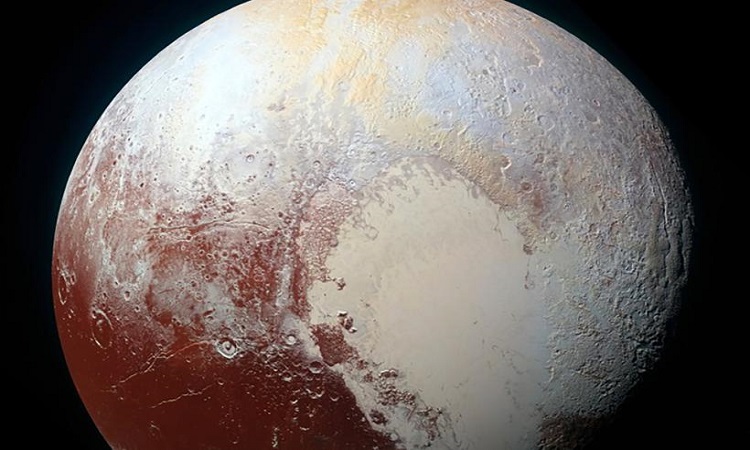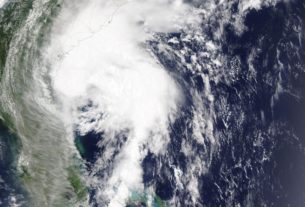That crimson red colour, which NASA researchers appreciate in their photos of Pluto, suggests that the planetoid had active geysers whose jets of water travelled to outer space. The composition of surface ice also indicates the existence of organisms.
Dale Cruikshank, the planetary scientist at the Ames Research Center, said the discovery was a surprise to everyone and there could be more similar areas in the Solar System. As background, in 2015, the New Horizons probe had revealed chemical compounds on rocks made of ice.
NASA, recently, found signs of ammonia in that frozen water, specifically around a crack called Virgili Fossa, to the west of the spot that contours the “heart”. Within that hollow, some liquid water was once fired, which points to the emergence of an ocean within the crust of Pluto.
Ammonia and ice could explain that the vital element could have remained in the liquid state. As ABC Science tells us, NASA researchers estimate more than one cryovolcano eruption – a formation similar to the volcano on land, but of low temperature – which fired water into the atmosphere, where it froze and fell on all sides.
Dale Cruikshank believes that the red colour is about the complicated organic matter; however, why is this data so important? The ice-rich in this gas of vomitive odour is related to compounds capable of harbouring DNA and RNA: extraterrestrial life from the viscera of Pluto.
On the other hand, Cristina Dalle Ore, another member of the staff of Ames and principal author of the observations, said: “In recent years, ammonia has been a bit like the ‘holy grail’ of planetary science.”
“Ammonia is a fragile molecule and is destroyed by ultraviolet radiation and cosmic rays, so when it is on a surface, it implies that it was placed there relatively recently, millions of years before it was found.”, complemented Dalle Ore.
Announcement of gas layers: Nature Magazine
Also, scientists from Japan and the United States had announced, last week, the discovery of multiple layers of gases that could act as insulators so that they do not freeze the supposed internal oceans of the dwarf planet.
In this regard, the students performed computer simulations in order to deepen the analysis of the photographs taken by the New Horizons.

Email: mary@satprwire.com Phone: +44 20 4732 1986
Marry is a fitness freak in every manner and gives proper care about her health and of others. She is probably the best person we have at Daily Research News for covering articles from the Health sector. If not at work, she can be seen drinking a cup of coffee.



